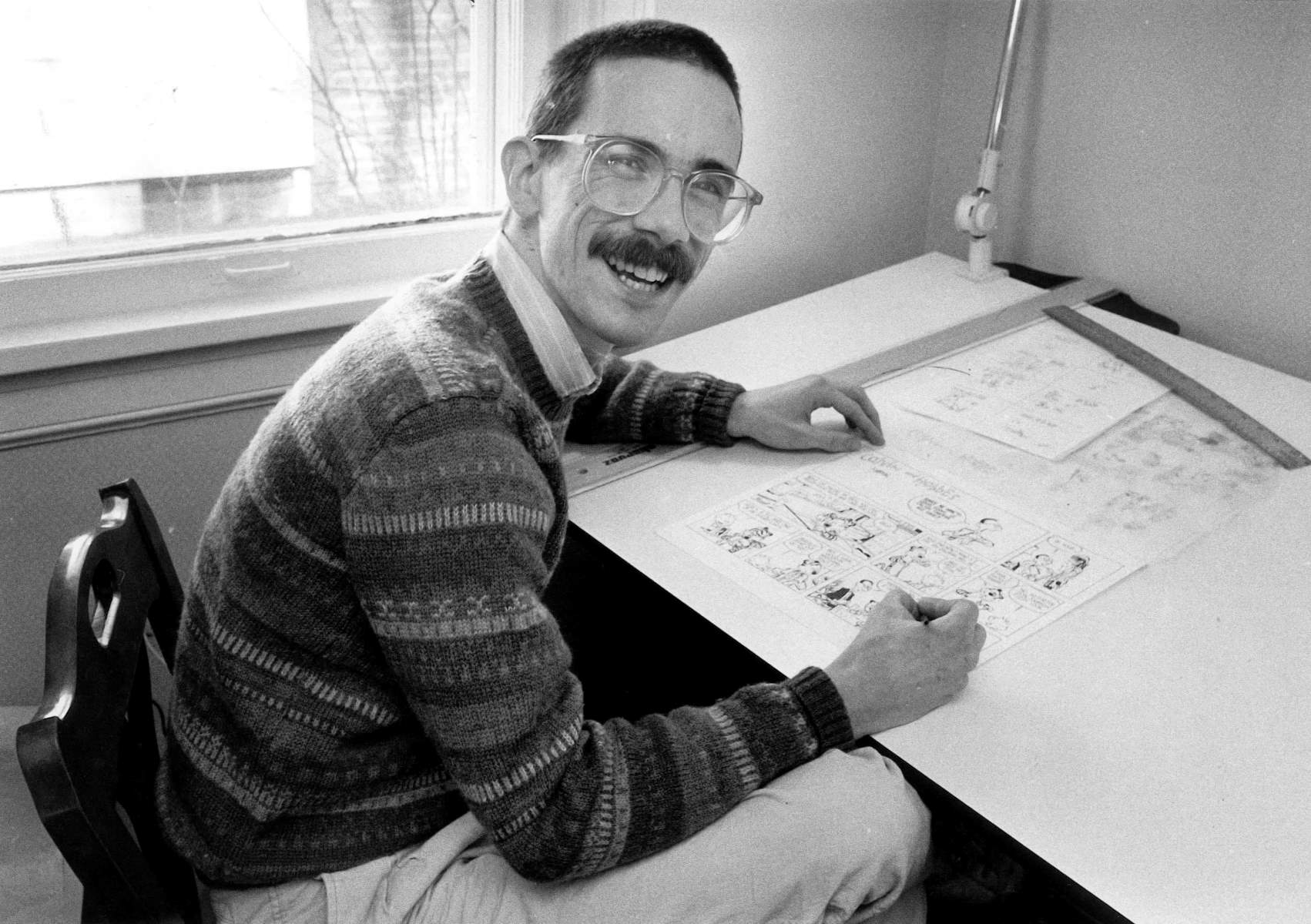
Bill Watterson is a name that resonates with fans of comic strips around the world. Known as the creative genius behind the beloved Calvin and Hobbes series, Watterson has left an indelible mark on the world of comics and captivated readers of all ages with his imaginative storytelling and witty humor. But there’s so much more to know about this enigmatic artist. From his fiercely guarded privacy and his stance on merchandising to his deep philosophical approach to life, here are 23 astounding facts about Bill Watterson that will give you a deeper insight into the man behind one of the most iconic comic strips of all time.
Key Takeaways:
- Bill Watterson, the creator of Calvin and Hobbes, was a private and dedicated artist who valued the integrity of his work, inspiring cartoonists and captivating readers with his timeless comic strip.
- Calvin and Hobbes, with its intricate artwork and universal themes, remains a classic in the world of comics, leaving a lasting legacy that continues to resonate with readers of all ages.
Bill Watterson is an American cartoonist.
Born in Washington, D.C. in 1958, Bill Watterson grew up to become one of the most influential cartoonists in history. His most notable work is the widely beloved comic strip, Calvin and Hobbes.
Calvin and Hobbes was syndicated from 1985 to 1995.
For a decade, Calvin and Hobbes captured the hearts of readers with its witty humor, imaginative storytelling, and insightful commentary on life. The strip featured the adventures of a young boy named Calvin and his stuffed tiger, Hobbes, who magically came to life in his imagination.
Watterson created all the artwork and writing for Calvin and Hobbes.
Unlike many comic strips, which rely on the collaboration of writers and artists, Bill Watterson single-handedly created every aspect of Calvin and Hobbes. He carefully crafted the dialogue, storyline, and artwork with meticulous attention to detail.
Calvin and Hobbes won multiple accolades.
Throughout its run, Calvin and Hobbes garnered numerous awards, including the Reuben Award for Outstanding Cartoonist of the Year from the National Cartoonists Society, which Watterson received a record-breaking five times.
Watterson fiercely protected the integrity of his work.
Bill Watterson was known for his unwavering dedication to the artistic integrity of Calvin and Hobbes. He resisted merchandising opportunities and fought to maintain control over how his creations were presented and reproduced, ensuring they remained true to his vision.
Bill Watterson retired Calvin and Hobbes in 1995.
After a decade of captivating readers, Watterson made the difficult decision to bring Calvin and Hobbes to an end. He announced the strip’s retirement, leaving fans with a lasting legacy and a sense of bittersweet nostalgia.
Watterson rarely gave interviews.
Throughout his career, Bill Watterson remained notoriously private and rarely granted interviews. This added to the air of mystery surrounding his persona, allowing the work of Calvin and Hobbes to speak for itself.
Watterson’s Calvin and Hobbes books have sold millions of copies worldwide.
The popularity of Calvin and Hobbes extended beyond the boundaries of newspaper comic strips. The collection of books featuring the adventures of Calvin and his mischievous tiger companion became instant bestsellers, capturing the hearts of readers around the globe.
Watterson won the prestigious Harvey Award.
In recognition of his outstanding contributions to the world of comics, Bill Watterson was honored with the Harvey Award for Best Syndicated Comic Strip in 1988 and 1989.
Watterson created intricate and detailed artwork for Calvin and Hobbes.
One of the distinguishing features of Calvin and Hobbes was the incredible attention to detail in the artwork. Watterson’s unique style brought the comic strip to life and added depth to the characters and their surroundings.
Calvin and Hobbes has been translated into multiple languages.
The universal appeal of Calvin and Hobbes led to its translation into numerous languages, allowing people from different cultures to enjoy the timeless adventures of the beloved duo.
Watterson’s decision not to license Calvin and Hobbes led to its limited merchandise availability.
Unlike many other popular comic strips, Calvin and Hobbes merchandise is scarce. Due to Watterson’s refusal to license his characters, there are only a few officially approved products available.
Watterson studied political science in college.
Before pursuing a career in cartooning, Bill Watterson obtained a degree in political science from Kenyon College in Ohio. Although his path eventually led him to create Calvin and Hobbes, his education undoubtedly influenced his thought-provoking social commentary within the strip.
Calvin and Hobbes explored complex themes.
Underneath its lighthearted exterior, Calvin and Hobbes dealt with a range of profound and philosophical topics, including existentialism, the nature of reality, and the importance of imagination.
Watterson turned down numerous offers for animated adaptations of Calvin and Hobbes.
Despite the immense popularity of Calvin and Hobbes, Bill Watterson remained steadfast in his refusal to allow the beloved characters to be adapted into animated television shows or movies. He believed that the essence of the strip would be lost in translation.
Watterson’s dedication to his craft inspired aspiring cartoonists.
Bill Watterson’s uncompromising devotion to artistic integrity and his unwavering passion for creating meaningful, thought-provoking comic strips continues to inspire and influence aspiring cartoonists around the world.
Calvin and Hobbes remains timeless.
Even after its conclusion, Calvin and Hobbes retains its relevance and continues to resonate with readers of all ages. Its universal themes and timeless humor have made it a classic in the world of comic strips.
Watterson shunned the spotlight.
Despite the popularity of Calvin and Hobbes, Bill Watterson refrained from public appearances and autograph sessions. He preferred to let his work speak for itself rather than seek personal fame or recognition.
Watterson drew inspiration from the works of other cartoonists.
Bill Watterson drew inspiration from legendary cartoonists such as Charles Schulz (creator of Peanuts) and George Herriman (creator of Krazy Kat). Their influence can be seen in the artistry and storytelling of Calvin and Hobbes.
Calvin and Hobbes strips are often quoted and referenced.
The memorable quotes and clever dialogue from Calvin and Hobbes have become part of popular culture. Lines from the strip are frequently quoted and referenced in various forms of media.
Watterson valued the creative freedom of the comic strip medium.
Throughout his career, Bill Watterson championed the artistic and creative freedom afforded by the medium of comic strips. He believed in the power of the written word and the visual imagery to convey meaningful messages.
Calvin and Hobbes frequently tackled environmental issues.
Amidst the humor and adventures, Calvin and Hobbes often explored the importance of conservation and environmental awareness, highlighting the need to protect and preserve the natural world.
The legacy of Calvin and Hobbes endures.
Decades after its final strip was published, Calvin and Hobbes continues to capture the hearts and imaginations of readers worldwide. Its impact on the world of comics and its enduring legacy make it truly astounding.
Conclusion
In conclusion, Bill Watterson is undoubtedly a fascinating and enigmatic figure in the world of comics. His creation, Calvin and Hobbes, continues to captivate readers of all ages with its insightful commentary, whimsical humor, and beautifully drawn illustrations. Despite his reclusive nature, the impact of Watterson’s work is undeniable, leaving a lasting legacy in the realm of comic strips. His dedication to preserving the integrity of his art and refusal to commercialize his characters have made him a highly respected and admired figure in the industry.Watterson’s ability to weave universal themes into his storytelling, coupled with his unique artistic style, set him apart from his contemporaries. His unwavering commitment to his artistic vision and his refusal to compromise on his principles have made him an inspiration to aspiring comic artists and fans alike. Indeed, Bill Watterson’s contributions to the world of comics will continue to be celebrated for years to come.
FAQs
1. When was Bill Watterson born?
Bill Watterson was born on July 5, 1958.
2. How did Bill Watterson get started in comics?
Watterson got his start in comics by submitting his work to various publications, eventually landing a job as a political cartoonist for the Cincinnati Post.
3. How long did Calvin and Hobbes run for?
Calvin and Hobbes ran for a total of ten years, from 1985 to 1995.
4. Why did Bill Watterson choose to end Calvin and Hobbes?
Watterson chose to end Calvin and Hobbes at the height of its popularity to maintain the integrity of the characters and prevent the strip from becoming stale.
5. Has Bill Watterson produced any new work since Calvin and Hobbes?
Since Calvin and Hobbes, Watterson has focused on painting and has largely kept a low profile. He has occasionally created new art for charity.
If you enjoyed learning about Bill Watterson, why not explore more fascinating facts about other beloved comic strip characters, like Ignatz Mouse from Krazy Kat? Discover the history behind National Cartoonists Day, celebrated annually on May 5th, and the impact cartoonists have had on our culture. For a philosophical twist, delve into the life and ideas of Thomas Hobbes, the namesake of Calvin's trusty stuffed tiger.
Was this page helpful?
Our commitment to delivering trustworthy and engaging content is at the heart of what we do. Each fact on our site is contributed by real users like you, bringing a wealth of diverse insights and information. To ensure the highest standards of accuracy and reliability, our dedicated editors meticulously review each submission. This process guarantees that the facts we share are not only fascinating but also credible. Trust in our commitment to quality and authenticity as you explore and learn with us.


